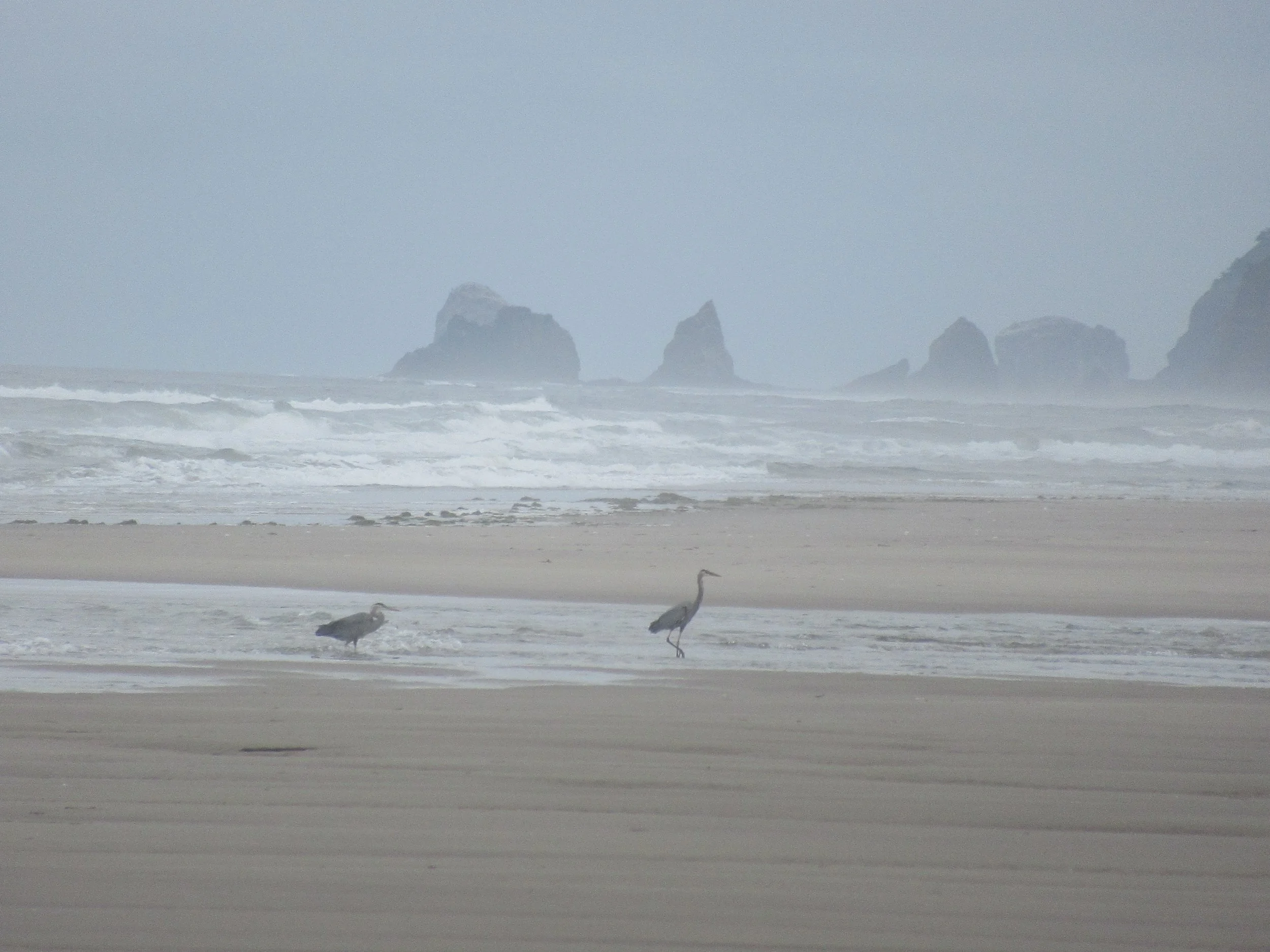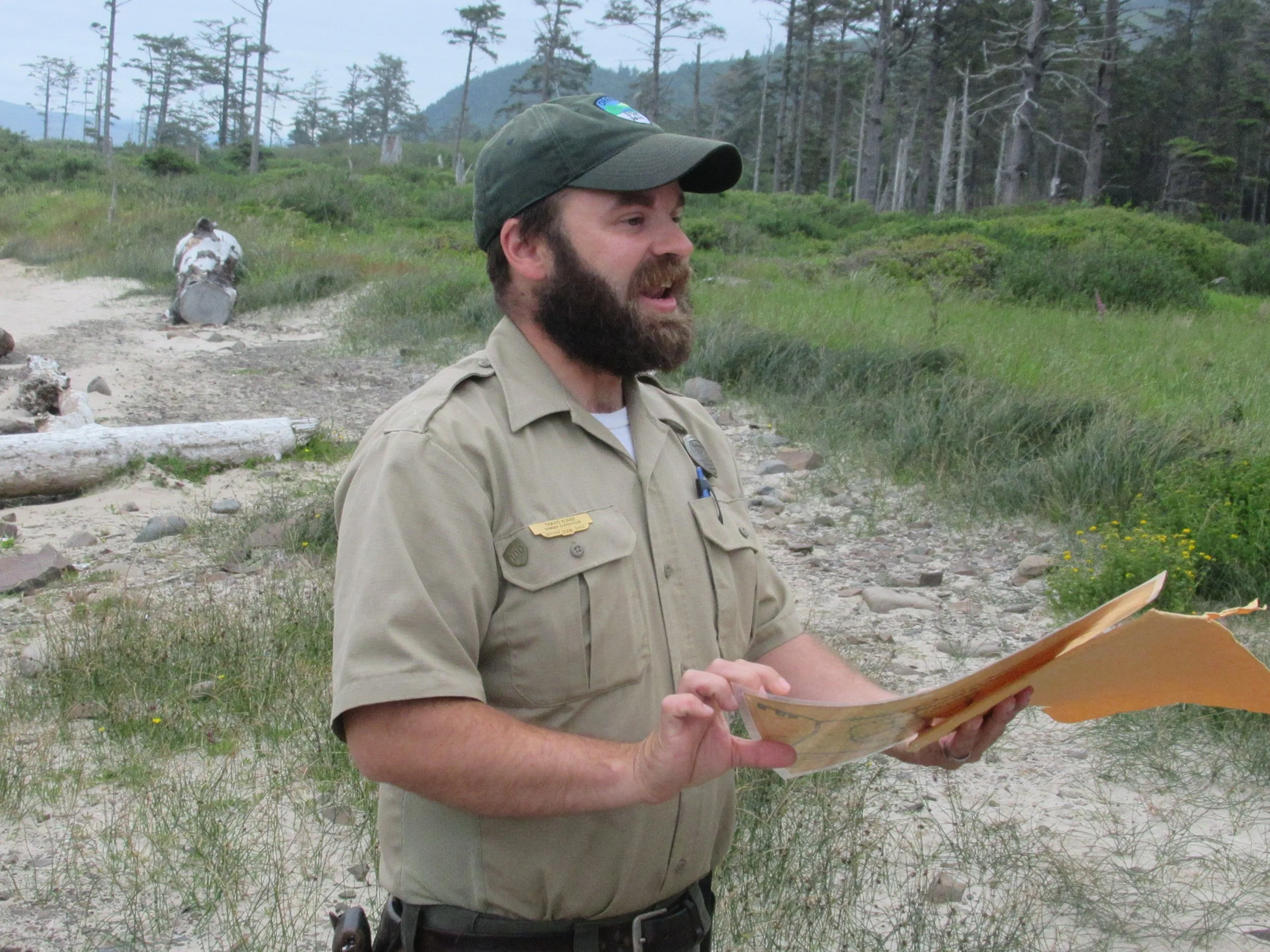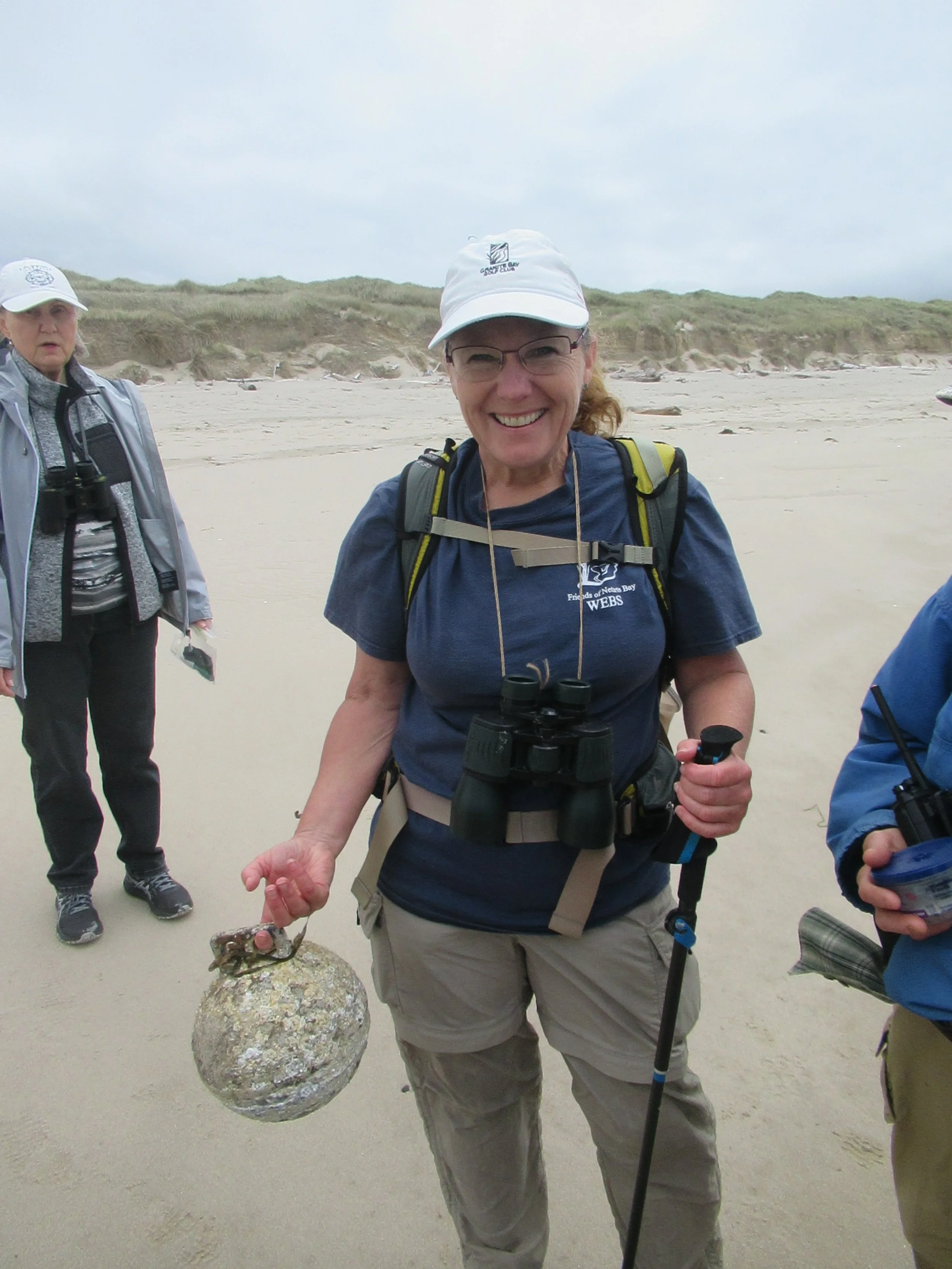Hikers on the Lookout



By Dave Powell
For the TODAY
It is a sunny Saturday at Cape Lookout on July 1. I am about to hike a 5-plus-mile section of the Oregon Coast I have never walked on before. It is a chance to see Chrissy Smith and others from Friends of Netarts Bay WEBS after a two-year hiatus.
Back in fall 2019 the Friends of Netarts Bay WEBS were holding an event, and mention was made that the large sandbags protecting the campers were failing — possibly a winter storm will actually cut off the spit from the mainland. I made a plan to try and walk the spit if it still existed in 2020. And we all know what interrupted that plan… COVID.
So, it is July 1, and the Friends of Netarts Bay WEBS are back to walk the spit with a total of roughly 25. The spit didn’t separate from the mainland. Also present (and presenting) are Allison Anholt from the Audubon Society and Risa Askerooth from OSU to talk about invasive beach grasses. Also in the crowd I spot a fellow Trailkeepers of Oregon worker, and a taller gentleman with distinguished white hair. I can’t place the white-haired guy and it will take to the end of the day to figure it out.
Before we head up the spit, Ranger Travis gives us some facts about Cape Lookout. Starting in the 1930s, the city of Bayocean was eroding away. So at Cape Lookout they planted 10,000 Shore Pines (native), 10,000 Scotch Broom (invasive) and 1,000,000 beach grass (also invasive). But erosion continues to this day, parts of the campgrounds have been moved inland, and the state of Oregon has designated $50-60 million to “reset” Cape Lookout. The campgrounds will move further inland, old facilities will be modernized (the clay pipes of the 1950s need retiring) And, for safety sake, people exiting the campground will head inland the entire way. Big Changes.
As we head north, Risa shows a native beach grass. It is easy to identify: the blades of grass are wide (between half and three quarters of an inch). The invasive American beach grass (native to the Atlantic Coast and Great Lakes) and European beach grass are now hybridizing. The results are being studied but as a general rule, hybrids, with their extra genes, usually dominate.
Toward the end of the spit Allison starts looking for signs of Snowy Plovers. They haven’t nested yet at Netarts, but have at Nehalem State Park (I took a Snowy Plover course there —Allison was one of the presenters). Along the way we saw a “family” of crows — too few for a “murder.” Tracks of snowy plovers were found, as well as crows and mice (Plovers’ natural predators). Since it is only 200 yards to the Netarts beach, and fishermen’s cleaning remains, perhaps that is why Netarts spit hasn’t seen a nest. Snowy Plovers are no longer endangered, I have seen plenty this year at the Oregon Dunes. Feeding on the wrack and the “sand fleas,” living nearly 20 years, having multiple nests each year, they have plenty of chances to increase back to a better normal population.
About an hour before the trip is over a find is made. It isn’t “Wilson.” I had heard of glass floats, but this one was aluminum!
After seven hours the trip is done. No Plover nests but some tracks found; a juvenile eagle spotted in flight, and learning about beach grasses is over. And I still haven’t figured out the white-haired gentleman ... until the Trailkeepers of Oregon worker mentions they need to get back to Lincoln City. Light bulb time! I walked next to him and said, “I finally figured out who you are. I just saw ‘The Savannah Sipping Society.’ I’ve seen you acting at Theatre West. This volunteering thespian, Steve Griffiths, is trying out for another play this winter. And I look forward to watching and enjoying it.
For more events by Friends of Netarts WEBS go to the group’s website and check community events. The July 31 Summer Salt Marsh Tour is piquing my attention. Another place to search for adventures is Explore Nature at https://explorenaturetillamookcoast.com.
For the Audubon Society you can check on more events on the Audubon Society of Lincoln City website. There is also the Snowy Plover training to be held next spring at Nehalem State Park.
After the hike I stopped at the office and talked with Ranger Travis. The north trail is still closed, so you have to walk up the road to the parking lot at the top to then take the south trail to Sand Lake. however, youth workers will be rerouting the trail (tree root balls obliterated parts of the trail) at the end of July and into August. Cross your fingers — it should reopen this fall.
